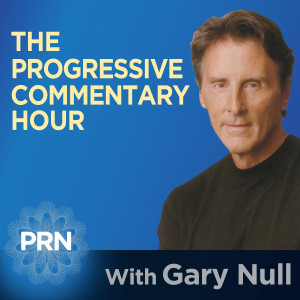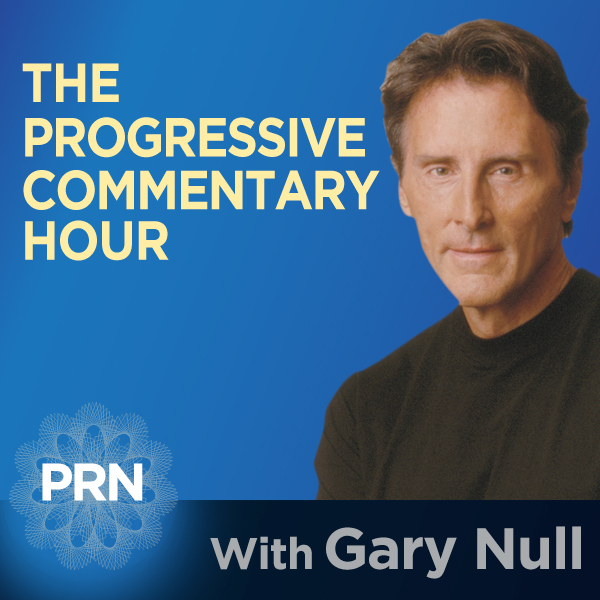Episodes

Wednesday Apr 07, 2021
The Progressive Commentary Hour - Guest Derrick Jensen
Wednesday Apr 07, 2021
Wednesday Apr 07, 2021
Bright Green Environmental Lies - How the Environmental Movement Lost Its Way
Derrick Jensen has become one of the nation’s leading voices of cultural and environmental dissent, who writes about civilization's devastating impact upon the environment and the natural world, and our society’s denial of that fact. Utne Reader listed Derrick among the 50 visionaries changing the world. In sharp contrast to environmental optimists who believe working within the corporate system will offset the tenuous planetary balance threatened by climate change, for many years Derrick has advocated for “dismantling of civilization” which can include radical dissent as well as imparting wisdom to our children. Derrick has written many influential books. His recently released “Bright Green Lies: How the Environmental Movement Lost Its Way and What We Can Do About It” is perhaps the most important publication to date the exposes the shortcomings, fallacies, and self deceit among the leading green voices and organizations who dominate the public lectern preaching about climate change and placing faith in technological solutions and new habits of green consumerism. A new documentary film with the same title and based upon Derrick's and his co-authors' book will premier on Earth Day - April 22. Derrick also hosts a weekly radio program, Resistance Radio, on the Progressive Radio Network every Sunday evening at 6:00 pm Eastern time. He holds a degree in mineral engineering physics from the Colorado School of Mines and a masters in creative writing from Eastern Washington University. Derrick's websites are DerrickJensen.org and BrightGreenLies.com

Wednesday Mar 31, 2021
Wednesday Mar 31, 2021

Wednesday Mar 24, 2021
Wednesday Mar 24, 2021
Dr. Gauthier Chapelle is a Beligian scientist, author, climate activist and interdependent researcher in biomimicry and a new discipline of collapsology -- the study of how integral systems peak, break down and collapse. He was trained as an agricultural engineer at Catholic University of Louvain and received his doctorate in biology from the Royal Institute of Natural Sciences of Belgium. Dr. Chapelle is one of the leading European pioneers in biomimicry and co-founder of the Biomimicry Europa Association -- the science of finding strategies in nature to mimic in order to address human design challenges. In the past Gauthier was a scientific manager developing climate educational tools in polar regions for the International Polar Foundation, and has research in Antarctica and on the infamous Lake Baikal in southern Siberia. He is published in peer-review scientific journals and is the author of several books, the latest being "Another End of the World is Possible," co-authored with French scientist Pablo Servigne and Raphael Stevens, which addresses the urgency of finding ways to adapt ourselves to inevitable collapses in the environmental and socio-economic systems. He is also the host of "The Work That Reconnects" network, based on the teachings of environmental activist and Eco-Buddhist philosopher Joanna Macy for learning how to face crises. Its website is WorkThatReconnects.org

Wednesday Mar 17, 2021
The Progressive Commentary Hour - Guest Alix Mayer
Wednesday Mar 17, 2021
Wednesday Mar 17, 2021

Wednesday Mar 10, 2021
The Progressive Commentary Hour - 03.10.21
Wednesday Mar 10, 2021
Wednesday Mar 10, 2021
Dr. Meryl Nass is an internal medicine physician in Maine and activist who specializes in treating patients with Gulf War syndrome, adverse reactions from the anthrax vaccine and vaccine safety and efficacy in general. In the past she has testified on six separate occasions before Congress on behalf of veterans suffering from the causes of Gulf War syndrome. Meryl is also active in opposing vaccine mandates and critiquing the false claims and fear mongering about infectious disease epidemics and corruption within the medical industrial military complex. She serves on the Board of the Alliance for Human Research Protection, a non profit organization run by Vera Sharav that advances medical ethics that uphold human rights and protect humans from wrongful medical interventions. Her work is cited in many professional articles and publications. She holds degrees from MIT and her medical degree from the Mississippi School of Medicine. Dr Nass' website where she blogs is AnthraxVaccine.blogspot.com
Dr. Peter Breggin has been called the “conscience of psychiatry” during his outstanding career to reform the mental health field. Dr. Breggin is a Harvard trained psychiatrist and a former consultant for the National Institutes of Mental Health. He is one of our nation's most important critics of the current conventional psychotherapeutic approaches in treating mental disorders in both adults and children, particularly the epidemic use of psychoactive drugs. Along with his wife, he is the founder of the Center for the Study of Empathic Therapy, a non profit organization providing scientific-based information on dangers and adverse effects of psychiatric drugs. Dr. Breggin has written many important and award winning books. Especially notable are "Medication Madness" and his later “Guilt, Shame and Anxiety: Understanding and Overcoming Negative Emotions.” His most recent book is "Covid-19 and the Global Predators: We Are Their Prey"

Wednesday Mar 03, 2021
The Progressive Commentary Hour - The Cost of Denial
Wednesday Mar 03, 2021
Wednesday Mar 03, 2021
https://www.youtube.com/watch?v=CIQ06VZ0sYQ&t=3s

Wednesday Feb 24, 2021
The Progressive Commentary Hour - Corruption Wikipedia and its biased agendas
Wednesday Feb 24, 2021
Wednesday Feb 24, 2021
Dirk Pohlmann has a long career as a journalist, business owner and entrepreneur including a spinoff of the prestigious Max Planck Institute, and as a film director and producer. He has directed over 20 films and aired on National Geographic, Discovery, the History Channel Canada, and in Australia, Russia and throughout Europe. Dirk was also a specialist in cold war intelligence operations and has written extensively on the subject. He is the author of the book "The Ecological Disaster" with Noam Chomsky, Chris Hedges and Nafeez Ahmed. Dirk, along with his colleague Markus Fiedler have been critically evaluating Wikipedia and its internal operations to expose its biased agendas under the disguise of being a legitimate encyclopedia. Together they have published their series "Stories from Wikipedia" -- in German -- which present new material every three weeks, and produced two documentary films "The Dark Side of Wikipedia" and "Censorship," which detail how the site has become a systematic problem that threatens a free society. Dirk was also instrumental in winning the first lawsuit for libel and slander against a senior Wikipedia editor on behalf of author Elias Davidson, who had provided evidence that no Muslims had hijacked the planes on 911. This is a landmark trial and hopefully will pave the way for others who have had their reputations defamed and destroyed on Wikipedia to have legal recourse and to begin sending shivers through the ideologues on Wikipedia. Although in Germany, his Wikipedia investigation website is WikiHausen.de

Wednesday Feb 17, 2021

Wednesday Feb 10, 2021
Wednesday Feb 10, 2021
Petr Koenig is a geopolitical analyst and a former senior economist at the World Bank and World Health Organization, who specialized in water and environmental economics for 30 years in countries around the world. He currently consults for the Swiss Development Cooperation, an international agency working with humanitarian aid delivered by th Swiss Confederation as part of its foreign policy to alleviate poverty around the world and promote human rights. Peter also lectures at universities in the US, Europe and South America. He is the author of "Implosion: An Economic Thriller about War, Environmental Destruction and Corporate Greed, and is a co-author of Cynthia McKinney's book "When China Sneezes: From Coronavirus Lockdown to the Global Politico-Economic Crisis." His articles are frequently published on Global Research, New Eastern Outlook and other online sites.

Wednesday Feb 03, 2021
Wednesday Feb 03, 2021
Vanessa Beeley is a British investigative journalist and photographer focusing on the conflicts in the middle east – particularly in Syria, Gaza and Palestine, Iraq, Egypt and Yemen. She is an associate editor of 21st Century Wire and was a member of a peace finding mission to Syria organized by the US Peace Council. She is a contributing writer for the Global Campaign to Return to Palestine, the Dissident Voice and manages the website The Wall Will Fall where she blogs about her travels and reports from the Middle East. Vanessa's articles appear in Mint Press News, Russia Today, Last American Vagabond, 21st Century Wire and many others. She was a finalist for the prestigious Martha Gellhorn Prize for Journalism, which has previously been awarded to Robert Parry, Patrick Cockburn, Robert Fisk and others. Last year she received the Serena Shim Award for uncompromised integrity in journalism. Her website is TheWallWillFall.org

